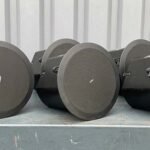An efficient air conditioning (AC) system is essential for maintaining comfort during warmer months. Understanding AC diagnostics—the process of identifying and resolving issues within your air conditioning system—can help ensure your unit operates effectively and prevent costly repairs.
Common AC Problems and Diagnostic Steps
-
AC Not Turning On:
-
Thermostat Settings: Ensure the thermostat is set to “cool” and the temperature is set lower than the current room temperature. Incorrect settings can prevent the AC from activating.
-
Circuit Breaker: Check the circuit breaker associated with the AC unit. A tripped breaker can cut power to the system; resetting it may resolve the issue.
-
-
Insufficient Cooling:
-
Dirty Air Filters: Clogged filters restrict airflow, reducing cooling efficiency. Regularly inspect and replace air filters as needed.
-
Refrigerant Levels: Low refrigerant can impair cooling performance. Signs include longer cooling cycles and higher energy bills. A professional technician should address refrigerant issues.
-
-
Frequent Cycling (Short Cycling):
-
Thermostat Placement: If the thermostat is near heat sources or in direct sunlight, it may cause the AC to cycle on and off more frequently. Relocating the thermostat can help.
-
Oversized AC Unit: An AC unit that’s too large for the space can cool the area quickly but not remove humidity effectively, leading to short cycling. Consulting with an HVAC professional is recommended.
-
-
Unusual Noises:
-
Loose Components: Rattling or banging sounds may indicate loose parts within the unit.
-
Motor Issues: Squealing noises can suggest problems with the blower or fan motor. It’s advisable to have a technician inspect and repair these components.
-
-
Water Leaks:
-
Clogged Drain Line: A blocked condensate drain line can cause water to back up and leak. Regular maintenance, including clearing the drain line, can prevent this issue.
-
Importance of Regular AC Maintenance
Routine maintenance is crucial for preventing many common AC problems. Key maintenance tasks include:
-
Regular Filter Replacement: Change air filters every 1-3 months to maintain airflow and indoor air quality.
-
Cleaning Coils: Dirty evaporator and condenser coils reduce efficiency; cleaning them annually is recommended.
-
Professional Inspections: Annual check-ups by certified HVAC technicians can identify and address potential issues before they escalate.
FAQ
1. How often should I have my AC system professionally inspected?
It’s advisable to schedule a professional inspection at least once a year, preferably in the spring, to ensure the system is prepared for peak usage.
2. Can I perform any AC diagnostics myself?
Yes, homeowners can check thermostat settings, inspect and replace air filters, and ensure the circuit breaker hasn’t tripped. However, more complex issues should be handled by professionals.
3. What are signs that my AC refrigerant is low?
Indicators include reduced cooling efficiency, longer cooling cycles, and ice buildup on refrigerant lines. A certified technician should address refrigerant issues.
4. Why is my AC unit making a buzzing noise?
Buzzing sounds can result from loose parts, debris in the unit, or electrical issues. It’s best to have a professional diagnose and resolve the problem.
5. How can I improve my AC’s efficiency?
Regular maintenance, such as cleaning coils, replacing filters, and ensuring proper insulation, can enhance efficiency. Additionally, using a programmable thermostat helps optimize cooling schedules.
Understanding and performing basic AC diagnostics can help maintain your air conditioning system’s efficiency and longevity. While some troubleshooting steps are manageable for homeowners, regular professional maintenance is essential to address complex issues and ensure optimal performance.










